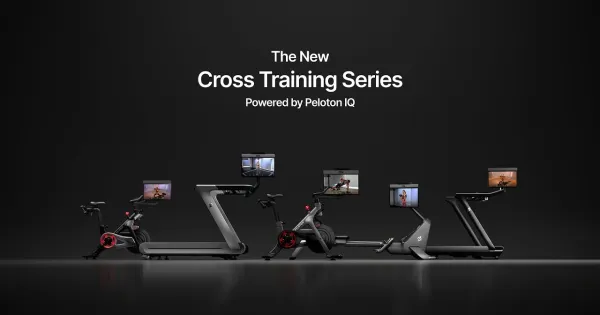Social Media Ads 101: Everything You Should Know

In the digital age, social media has become an integral part of our daily lives. With billions of users across various platforms, social media has not only transformed how we connect with friends and family but also how businesses reach their target audiences. One of the most powerful tools in the realm of digital marketing is social media advertising.
In this article, we'll dive deep into social media ads, exploring what they are, how they work, and why they've become a crucial component of modern marketing strategies.
What Are Social Media Ads?

Social media ads, often referred to as paid social, are a form of online advertising that appears on social media platforms. Unlike organic content, which businesses can post for free on their profiles, social media ads are paid placements specifically designed to reach a larger and more targeted audience. These ads can take various formats, including text, images, videos, carousels, and more. They appear in users' social media feeds, between posts from their friends and followed accounts.
Social media advertising offers several advantages. First, it provides businesses with a powerful tool to increase their online presence and brand visibility. With billions of users active on platforms like Facebook, Instagram, TikTok, Twitter, and LinkedIn, advertisers can tap into a vast pool of potential customers. Additionally, social media ads offer advanced targeting options, allowing businesses to reach specific demographics, interests, and behaviors, ensuring their ads are seen by the right people.
This precision targeting can result in higher engagement rates and a better return on investment (ROI). Furthermore, social media platforms provide valuable data and analytics to measure the performance of ads, helping businesses refine their strategies and optimize their ad campaigns for better results.
How Do Social Media Ads Work?

Social media advertising operates on a straightforward principle: advertisers pay a fee to social media platforms to display their ads to a specific audience. The platforms use intricate algorithms to determine which users see these ads based on various factors, including user demographics, interests, behavior, and engagement history. Advertisers can define their target audience through detailed parameters, ensuring that their content reaches the most relevant users.
Social media ads typically employ a pay-per-click (PPC) or pay-per-impression (CPM) model. In PPC, advertisers pay a fee each time a user clicks on their ad, while in CPM, they pay for every 1,000 impressions their ad receives. This pricing structure offers flexibility and allows businesses to choose the option that best aligns with their advertising goals and budget.
How to Create Social Media Ads

1. Define Your Goals: Start by determining your objectives. Are you looking to increase brand awareness, drive website traffic, generate leads, or boost sales? Clear goals will guide your ad strategy.
2. Choose the Right Platform: Select the social media platforms where your target audience is most active. Common choices include Facebook, Instagram, TikTok, Twitter, LinkedIn, and Pinterest.
3. Audience Targeting: Use the platform's audience targeting options to define your ideal audience. Specify demographics, interests, behaviors, and location to reach the right people.
4. Set a Budget: Determine your ad spend. Social media platforms offer various budgeting options, including daily or lifetime budgets and bidding strategies.
5. Create Compelling Content: Craft attention-grabbing ad copy, select high-quality images or videos, and design engaging visuals. Your ad should clearly convey your message and offer value to the audience.
6. Choose Ad Format: Different platforms offer various ad formats, such as image ads, video ads, carousel ads, and more. Select the format that aligns with your campaign objectives.
7. Ad Placement: Decide where your ads will appear. Options may include in-feed ads, stories, sidebar ads, or sponsored posts, depending on the platform.
8. Ad Scheduling: Set the timing for your ads to run. Schedule them to appear at times when your target audience is most active.
9. Monitor and Optimize: Regularly check the performance of your ads using platform analytics. Adjust your targeting, budget, and ad creative based on the data to improve results.
10. A/B Testing: Experiment with different ad variations to see what works best. Test headlines, images, ad copy, and calls to action to optimize your campaigns.
11. Compliance: Ensure your ads comply with the platform's advertising policies and guidelines to prevent rejection or account suspension.
12. Launch and Track: Once your ads are ready, launch your campaign and closely monitor its performance. Make adjustments as needed to achieve your goals.
Pros of Social Media Ads
- Wide Audience Reach: Social media platforms have billions of active users worldwide, providing access to a vast and diverse audience.
- Precise Targeting: Social media ad platforms offer advanced targeting options, allowing you to reach your ideal audience based on demographics, interests, behaviors, and more. This precision ensures that your ads are seen by those most likely to convert.
- Cost-Effective: Social media ads can be cost-effective, with options for businesses of all sizes and budgets. You can set daily or lifetime budgets, control spending, and measure ROI.
- Engagement Opportunities: Social ads encourage user engagement through likes, shares, comments, and clicks. They facilitate interaction with your brand, increasing brand visibility and social proof.
- Data and Analytics: Social media platforms provide comprehensive analytics tools, giving you valuable insights into ad performance. You can track key metrics such as click-through rates, conversions, and audience demographics. This data enables data-driven decision-making and continuous optimization.
- Flexibility and Customization: You have the flexibility to choose ad formats (e.g., image ads, video ads, carousel ads), objectives (e.g., brand awareness, lead generation, conversions), and placements (e.g., Facebook, Instagram, Twitter). This customization ensures your ads align with your specific goals.
Cons of Social Media Ads
- Ad Saturation: With many businesses using social media advertising, there's a risk of ad saturation within your target audience. Users may become overwhelmed with ads, making it challenging to stand out.
- Ad Fatigue: Over time, users may become fatigued or irritated by seeing the same ads repeatedly. This can lead to decreased engagement or ad blindness.
- Ad Blocking: Some users employ ad-blockers, preventing your ads from reaching them altogether. This reduces your potential audience size.
- Cost Variability: While generally cost-effective, ad costs can vary widely based on factors like competition and targeting criteria. In highly competitive markets, ad costs may increase significantly.
- Algorithm Changes: Social media platforms frequently update their algorithms, affecting the visibility of your ads. An algorithm change can impact your ad's reach and performance.
- Negative Feedback: If not executed well, social media ads can receive negative feedback from users. This can harm your brand's reputation and create a challenging environment for effective advertising.
Top Social Media Channels
- Facebook Ads: Facebook offers a highly customizable advertising platform with advanced targeting options. You can create various ad formats, including image, video, carousel, and slideshow ads. With billions of users, Facebook is a top choice for many advertisers.
- Instagram Ads: Owned by Facebook, Instagram is particularly popular for visual and lifestyle brands. It offers similar ad formats and targeting options, making it easy to reach a younger, visually-oriented audience.
- TikTok Ads: TikTok is a fast-growing platform with a primarily younger user base. It offers a range of ad formats, including In-Feed Ads, Branded Hashtag Challenges, and Branded Effects.
- Twitter Ads: Twitter provides opportunities for both organic and paid advertising. Promoted Tweets, Trends, and Accounts can help you increase your brand's visibility and engagement.
- LinkedIn Ads: LinkedIn is the go-to platform for B2B marketing. It allows you to target professionals based on job title, industry, company size, and more. Sponsored Content, Sponsored InMail, and Display Ads are popular ad formats.
- YouTube Ads: Video advertising on YouTube is a powerful way to reach a massive audience. You can create TrueView ads that play before, during, or after videos, as well as display ads.
- Pinterest Ads: Pinterest is ideal for businesses with visually appealing products or services. Promoted Pins and Shopping Ads allow you to showcase your offerings to a predominantly female audience.
- Snapchat Ads: Snapchat is popular among younger users and offers various ad formats, including Snap Ads, Story Ads, and Filters. It's effective for brands targeting a youthful demographic.
Final Thoughts
In conclusion, social media ads have revolutionized digital marketing, offering businesses the ability to connect with their target audience on a massive scale while maintaining precise control over their budgets and campaign parameters.
With the power of data-driven insights and diverse ad formats, social media advertising continues to be a crucial tool for businesses looking to thrive in the competitive digital landscape. Whether you're a small startup or a multinational corporation, harnessing the potential of social media ads can significantly impact your brand's success.





